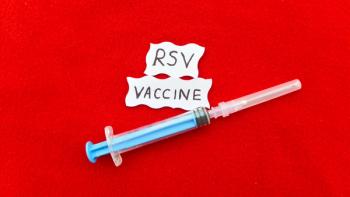
How to Match for a Pharmacy Residency
With the odds of getting into a program just a little better than 1 in 2, how can students make sure that they are successful?
53.7%.
That represents the percentage of students who applied to National Matching Services in 2016 and actually ended up matching with a PGY1 program.
More than
Let that sink in for a second.
Based on 2016 numbers, the odds of getting into a residency are just a little better than 1 in 2.
Consider this recent situation. There was an opening for an inpatient staff pharmacist within my hospital network. There were 84 applicants. Of these, half had residency training. And of those with residency training, half had greater than 2 years of clinical experience.
Let's say a student will graduate within the next couple of years. She decides that she does not want to work in a community pharmacy, and she plans to apply for in-patient jobs. Unless that student lives in a rural environment, she should assume that at least 20 of the applicants with whom she is competing will have a residency and several years' experience and another 20 applicants will have just completed their residency training. Many of these people will have board certification as well, as one meets the requirements to sit for the test after completing a PGY1 residency.
It is difficult to stand out against that kind of competition.
Although it has been true in the pharmacy profession in the past that completing a residency is not necessary to secure a desired position, the job market is changing. The competitive landscape will become more difficult each year. The number of graduating pharmacists is increasing quickly and is outpacing the number of jobs available.
But though doing a residency may not be a prerequisite to landing a job, it certainly makes it more likely. At a bare minimum, a residency provides essential clinical experience and opens up networking opportunities.
So, how can students make sure that they are a match?
Prep work is required, and the earlier a student starts, the better. This can be broken down into 4 phases.
Phase 1: Before Midyear
Students must focus on making themselves the most competitive candidates possible. Grades play a part in this but not nearly as much as many think. It is far more important to focus on obtaining and excelling at leadership roles as a student. Strive to become a class officer or chapter president for a professional organization. The experiences and networking opportunities gained will do more to make students competitive candidates than grades alone.
Even more important is to set up the right rotation schedule. Try to get as many difficult clinical rotations as possible upfront. Try to get a rotation that is universally accepted as difficult. Critical care, hematology/oncology, and emergency medicine are all good options. The goal during these rotations is to get clinical experience and impress teachers enough to secure letters of recommendation, which are the most important part of a residency application. Students should aim to get 2 recommendation letters from preceptors who can speak directly to patient care experience. This is why it is key to set up clinical rotations early. Having a glowing recommendation letter from the right preceptor helps move an application to the top of the pile.
Phase 2: Midyear
The main focus now is to network as much as possible and to try not to get too frazzled by the
Phase 3: After Midyear
This is the time to focus on the letter of intent and preparing for interviews. The letter of intent should be compelling and easy to read. Remember that reviewers are reading hundreds of personal statements, so students must make sure theirs stand out. The single best way to improve writing is to use the
Residency interviews are stressful and draining. They last anywhere from 5 to 8 hours, during which time candidates get hammered with questions, must solve clinical cases on the spot, and give a 15- to 30-minute presentation. Talk to friends who have been through the process or find a
Phase 4: The Match
Here is where students must decide how to rank their programs. Do not try to game the system by ranking what seems like the most likely matches. Consider everything that is important, from location to rotation schedule to availability of a PGY2 program, and then rank the programs accordingly. Do not forget to think about the overall feeling of the program and whether it seems like a good fit. Students should have a doomsday strategy in place, in case they
Conclusion
Simply put, completing a residency improves job prospects, especially in the early part of pharmacists' careers. Even those who are undecided about a residency should put the work in early to set themselves up to match. The experience gained will be a benefit professionally, no matter what the outcome is.
For additional information, check out "
Newsletter
Stay informed on drug updates, treatment guidelines, and pharmacy practice trends—subscribe to Pharmacy Times for weekly clinical insights.




















































































































































































































